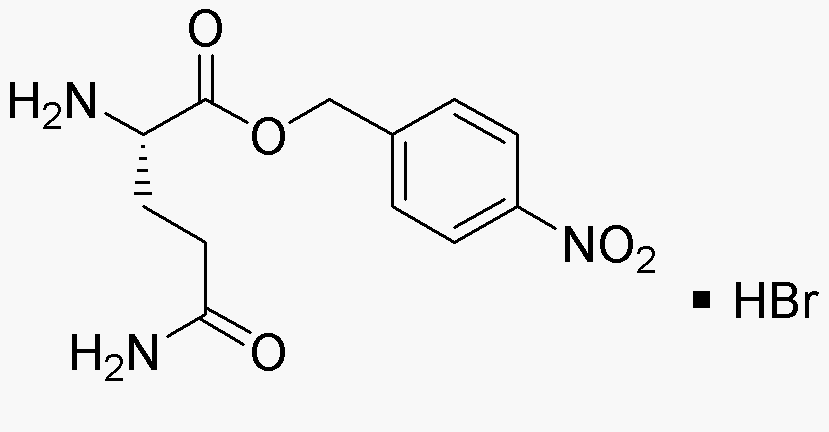L-Glutamine a-4-nitrobenzyl ester hydrobromide is widely utilized in research focused on:
- Biochemical Research: This compound serves as a valuable tool for studying amino acid metabolism and protein synthesis, helping researchers understand cellular functions and metabolic pathways.
- Drug Development: It is used in the synthesis of pharmaceutical intermediates, facilitating the development of new medications, particularly those targeting metabolic disorders.
- Cell Culture Applications: The compound can enhance cell viability and proliferation in culture, making it essential for tissue engineering and regenerative medicine research.
- Analytical Chemistry: It acts as a standard in chromatographic techniques, aiding in the quantification of amino acids in biological samples, which is crucial for nutritional studies.
- Neuroscience Studies: Researchers utilize it to investigate the role of glutamine in neurotransmission and its potential therapeutic effects in neurodegenerative diseases.
General Information
Properties
Safety and Regulations
Applications
L-Glutamine a-4-nitrobenzyl ester hydrobromide is widely utilized in research focused on:
- Biochemical Research: This compound serves as a valuable tool for studying amino acid metabolism and protein synthesis, helping researchers understand cellular functions and metabolic pathways.
- Drug Development: It is used in the synthesis of pharmaceutical intermediates, facilitating the development of new medications, particularly those targeting metabolic disorders.
- Cell Culture Applications: The compound can enhance cell viability and proliferation in culture, making it essential for tissue engineering and regenerative medicine research.
- Analytical Chemistry: It acts as a standard in chromatographic techniques, aiding in the quantification of amino acids in biological samples, which is crucial for nutritional studies.
- Neuroscience Studies: Researchers utilize it to investigate the role of glutamine in neurotransmission and its potential therapeutic effects in neurodegenerative diseases.
Documents
Safety Data Sheets (SDS)
The SDS provides comprehensive safety information on handling, storage, and disposal of the product.
Product Specification (PS)
The PS provides a comprehensive breakdown of the product’s properties, including chemical composition, physical state, purity, and storage requirements. It also details acceptable quality ranges and the product's intended applications.
Certificates of Analysis (COA)
Search for Certificates of Analysis (COA) by entering the products Lot Number. Lot and Batch Numbers can be found on a product’s label following the words ‘Lot’ or ‘Batch’.
*Catalog Number
*Lot Number
Certificates Of Origin (COO)
This COO confirms the country where the product was manufactured, and also details the materials and components used in it and whether it is derived from natural, synthetic, or other specific sources. This certificate may be required for customs, trade, and regulatory compliance.
*Catalog Number
*Lot Number
Safety Data Sheets (SDS)
The SDS provides comprehensive safety information on handling, storage, and disposal of the product.
DownloadProduct Specification (PS)
The PS provides a comprehensive breakdown of the product’s properties, including chemical composition, physical state, purity, and storage requirements. It also details acceptable quality ranges and the product's intended applications.
DownloadCertificates of Analysis (COA)
Search for Certificates of Analysis (COA) by entering the products Lot Number. Lot and Batch Numbers can be found on a product’s label following the words ‘Lot’ or ‘Batch’.
*Catalog Number
*Lot Number
Certificates Of Origin (COO)
This COO confirms the country where the product was manufactured, and also details the materials and components used in it and whether it is derived from natural, synthetic, or other specific sources. This certificate may be required for customs, trade, and regulatory compliance.


